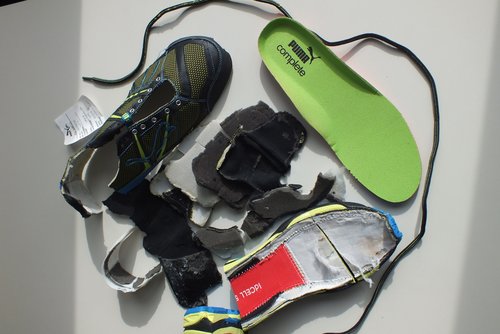Recovery of PUMA products
Bring me back and PUMA In Cycle Collection
In April 2012, PUMA introduced the "Bring Me Back" system. Since then, customers in PUMA stores worldwide can hand back used products, which are then reused and recovered by the company I:CO. The products of the new recyclable and biodegradable PUMA InCycle Collection, which have been on the market since March 2013, are also collected in this way. They include the recyclable PUMA track jacket, made of 98 percent polyester made from used PET bottles. The PUMA rucksack made of polypropylene is returned to the original manufacturer after use; they in turn process the material to produce new rucksacks.
Analysis of waste management options
Through such new developments PUMA wants to improve its planning and decision-making basis. It therefore commissioned bifa to analyse the waste management options for used PUMA products. To this end, bifa examined reference products and options for the collection and sorting of products and materials.
35 paths with different recovery and removal approaches were developed and assessed. The implementation opportunities of the paths were then compared with the expected benefits, especially for the environment.
Different scenarios
A differentiation was made between well-developed (waste management scenario) and less developed waste industries (waste picking scenario).
It was found that paths that are ecologically disadvantageous in the waste management scenario can definitely be advantageous in the waste picking scenario. In addition, paths can be implemented in the waste picking scenario, which would not have any chance at all in developed waste industries. Modern waste incineration is ecologically advantageous for waste picking scenarios, but nevertheless it is a difficult option. In waste picking structures recovery approaches have to be checked carefully for possible social side-effects, say for the smallest local businesses.
In developed waste industries the collection and reuse of used shoes and textiles is to be developed further.
The following general recommendations were given:
- The use of recycling materials in PUMA products is recommended from an ecological point of view. This finding is also substantiated by the results of the first ecological profit and loss account of PUMA. More than half of all environmental impacts along the whole production and supply chain of the company are caused during the production of raw materials.
- The product design should also be optimised for existing recovery paths, as realistically only part of the products can be collected via the collection system.
- The ecological advantages of products which are made of only one material, are only effective if the product is sorted out after use and the material is actually recycled.
- Biodegradable products can also have disadvantages, for example, the faster development of climate-harming methane in case of improper landfill.
- Extension of the product life over the whole life cycle including use as a used product is the most effective way to reduce environmental impacts.
![[Translate to Englisch:] Placeholder](/fileadmin/_processed_/e/b/csm_Header_Projekte_603d83e502.jpg)
